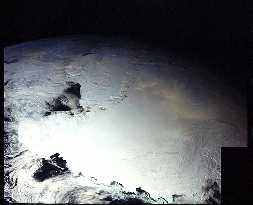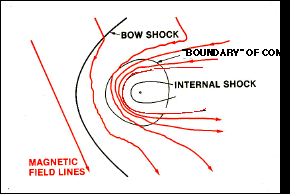This is an image of Pluto with its moon Charon.
Click on image for full size
NASA
Discover Pluto
The ninth planet in our solar system is Pluto. It was discovered in 1930 by Clyde Tombaugh. Pluto is very small and far out from the Sun, so it is very dim in the sky. You can't see Pluto without a telescope.
We know little about this small planet. It is the only planet that has not been visited by a spacecraft. Pluto was named after the god of the underworld. It has one moon named Charon.
You might also be interested in:

Pluto is a frigid ball of ice and rock that orbits far from the Sun on the frozen fringes of our Solar System. Considered a planet, though a rather odd one, from its discovery in 1930 until 2006, it was
...more
Pluto has // Call the moon count function defined in the document head print_moon_count('pluto'); moons. One of the moons is very big. The big moon is name Charon. The other two moons are small. They don't
...more
It may seem hard to believe that Pluto could have an atmosphere because it is so cold, but it does. Because there are times when Pluto is closer to the sun than is Neptune (making it the 8th planet for
...more
Of all the planets and moons in the solar system, Pluto and Charon are the two which are the most alike. They are almost the same size, and they are very close together. Pluto and Charon are so close
...more
Pluto is so far away, and has never been explored. Questions to answer about Pluto include the following: What are the geologic features of the surface? (pictures of the surface) If there are bare spots,
...more
No one knows whether or not Pluto has a magnetosphere. Scientists were very surprised to find that Jupiter's icy moon Ganymede had a magnetosphere because it is hard to explain how an icy body can develop
...more
The diagram to the left shows what the inside of Pluto may look like. Pluto is mostly made of ice, with a small core of some rocky material buried inside. If the interior is warm enough, the inside of
...more














